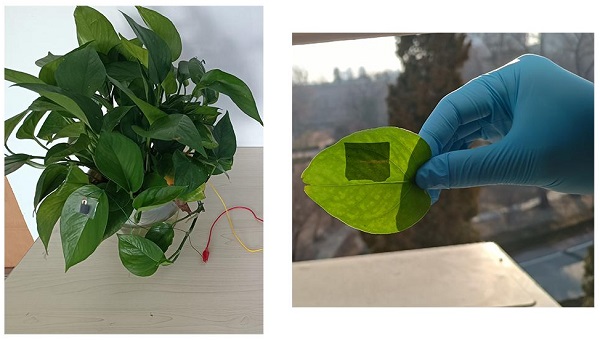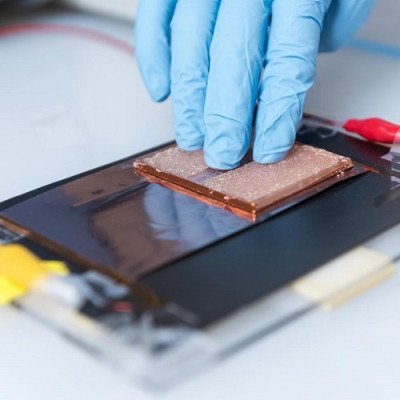To enhance the design and performance of TENGs, Penn State researchers combined a porous 2D material known as MXene and laser-induced graphene foam nanocomposite to form a material system that enables a TENG to be stretchy and able to perform on dynamic surfaces, such as the human skin or the leaf of a plant.
The researchers published their novel design on Dec. 1 in Nano Energy.

When applied to a houseplant, a stretchy triboelectric nanogenerator (TENG) sensor can detect an intruder passing through by sensing the wind the person creates. The sensor can then sound an alarm system or turn lights on in the house to deter the intruder. The combination of materials allows for the TENG sensor to deform and stretch as the plant leaf grows.
“With the combination of the two materials, the TENG can stretch under various levels of deformability, while continuing to harvest kinetic motion to power the device,” said Huanyu “Larry” Cheng, James L. Henderson, Jr. Memorial Associate Professor of Engineering Science and Mechanics in the Penn State College of Engineering.
The work builds on previous research that established self-powering supercapacitors for use in wearable sensors, but, in the past, the TENGs were not intrinsically stretchy, according to Cheng. The porous MXene-graphene foam nanocomposites make that possible.
The TENG has a number of unique applications, including for use in personal training.
“The device can signal a personal trainer if their trainee using a wearable sensor is in the correct position for an exercise or is stretching or moving too far in a direction that could be dangerous,” Cheng said. “It can also alert the trainer if their trainee is over-training.”
The TENG can also be applied to changing surfaces such as a plant leaf.
“Typical sensors cannot grow or deform with the changing nature of a leaf,” Cheng said. “This device can be used over days, weeks, months or years as it grows and stretches with the leaf with continuous self-powering.”
When applied to a houseplant, a TENG sensor can detect an intruder passing through by sensing the wind the person creates. The sensor can then sound an alarm system or turn lights on in the house to deter the intruder.
The sensor also can be applied to a water faucet and detect minor droplets as they fall.
“It can help conserve energy and resources by alerting a user that there is a leak,” Cheng said.
Read the original article on Pennsylvania State University.
